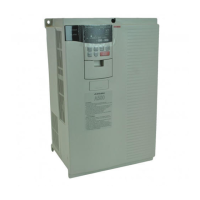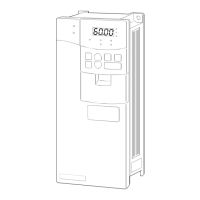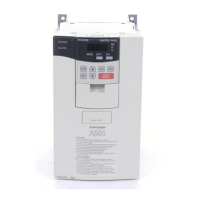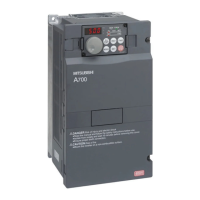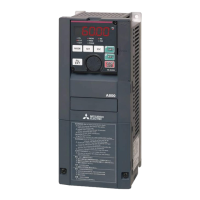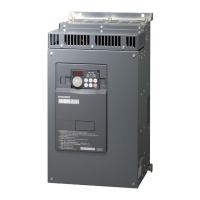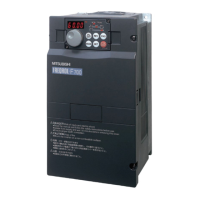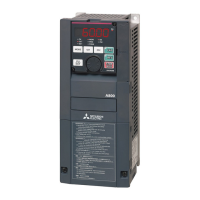J
Julia PorterSep 13, 2025
What to do if instantaneous power failure of Mitsubishi Electric FR-A500L?
- Jjesse61Sep 13, 2025
To address an instantaneous power failure with your Mitsubishi Electric Inverter, restore power.
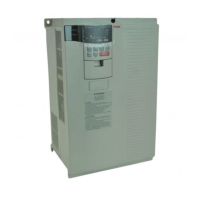
What to do if instantaneous power failure of Mitsubishi Electric FR-A500L?
To address an instantaneous power failure with your Mitsubishi Electric Inverter, restore power.
Why is my Mitsubishi Electric Inverter cooling fin overheating?
The cooling fin of the Mitsubishi Electric Inverter may overheat due to: * An issue with the cooling fan. * Clogged cooling fins. * High ambient temperature. To resolve this, replace the cooling fan if it's faulty, clean the cooling fins, and ensure the ambient temperature is within specified limits.
What to do if Mitsubishi Electric FR-A500L Inverter brake unit cooling fin overheating?
If the brake unit cooling fin of your Mitsubishi Electric Inverter is overheating, consider the following: * Check if the brake unit's usage frequency is appropriate. * Inspect the cooling fins for any clogs. * Verify the inverter unit cooling fan is functioning correctly. Suggested solutions include reducing the load GD2, reducing the braking frequency, cleaning the cooling fins, or replacing the cooling fan.
What to do if Mitsubishi Electric FR-A500L capacitor overcurrent?
If your Mitsubishi Electric Inverter is showing a capacitor overcurrent, it may be due to: * A short circuit in the DC circuit. * An output short circuit or ground fault (check the motor winding and insulation resistance). To resolve this, repair any short-circuited sections and replace the DC fuse. Also, repair any output short circuits and ground faults, which may involve repairing or replacing the motor.
What to do if Mitsubishi Electric FR-A500L Inverter control board ambient temperature error?
If the Mitsubishi Electric Inverter displays a control board ambient temperature error, it might be caused by: * An issue with the cooling fan. * The ambient temperature being too high. To fix this, try replacing the cooling fan and ensuring the ambient temperature stays within the specified limits.
What to do if Mitsubishi Electric Inverter POWER lamp is not lit?
If the POWER lamp on your Mitsubishi Electric Inverter is not lit, make sure that the wiring and installation are correct.
What to do if Mitsubishi Electric Inverter operation mode is not changed properly?
If the operation mode of your Mitsubishi Electric Inverter is not changing properly, check the Pr. 79 setting.
What to do if Mitsubishi Electric FR-A500L Inverter operation panel (FR-DU04) display is not provided?
If the operation panel (FR-DU04) display of your Mitsubishi Electric Inverter is not provided, make sure that the operation panel is connected securely with the inverter.
Why Mitsubishi Electric FR-A500L motor rotates in opposite direction?
If the motor connected to your Mitsubishi Electric Inverter rotates in the opposite direction, check that the phase sequence of output terminals U, V, and W is correct.
What to do if Mitsubishi Electric FR-A500L ambient temperature too high?
If the ambient temperature around your Mitsubishi Electric Inverter is too high, set the ambient temperature within the specified limits.
| Series | FR-A500L |
|---|---|
| Category | Inverter |
| Overload Capacity | 150% for 60 seconds |
| Power Range | 0.4 to 55 kW |
| Control Method | V/F control, Advanced magnetic flux vector control, Vector control |
| Protection Features | Overcurrent, Overvoltage, Undervoltage, Overheat |
| Braking Unit | Built-in (optional external braking resistor) |
| Communication Interface | RS-485 |
| Cooling Method | Fan cooling |
| Operating Temperature | -10°C to +50°C |
| Storage Temperature | -20°C to +65°C |
| Humidity | 95%RH (Non-condensing) |
| Altitude | Up to 1000 m |
Essential precautions to prevent electric shock during operation and maintenance.
Guidelines to prevent fire hazards associated with inverter installation and operation.
Comprehensive instructions for connecting main circuit and control circuit terminals.
Comprehensive list of all configurable parameters, their ranges, and factory settings.
Definitions and descriptions of various error codes and alarm conditions.
Checkpoints and remedies for common faults and operational issues.
